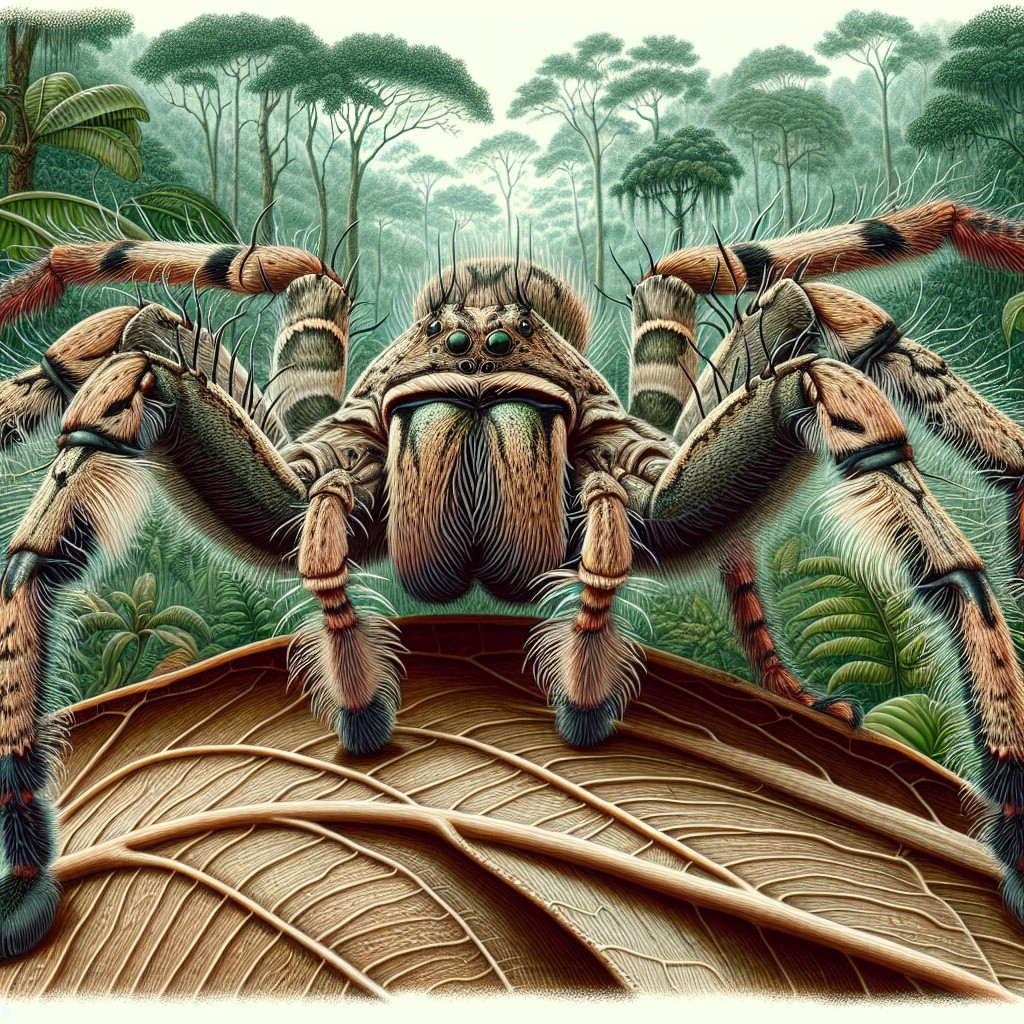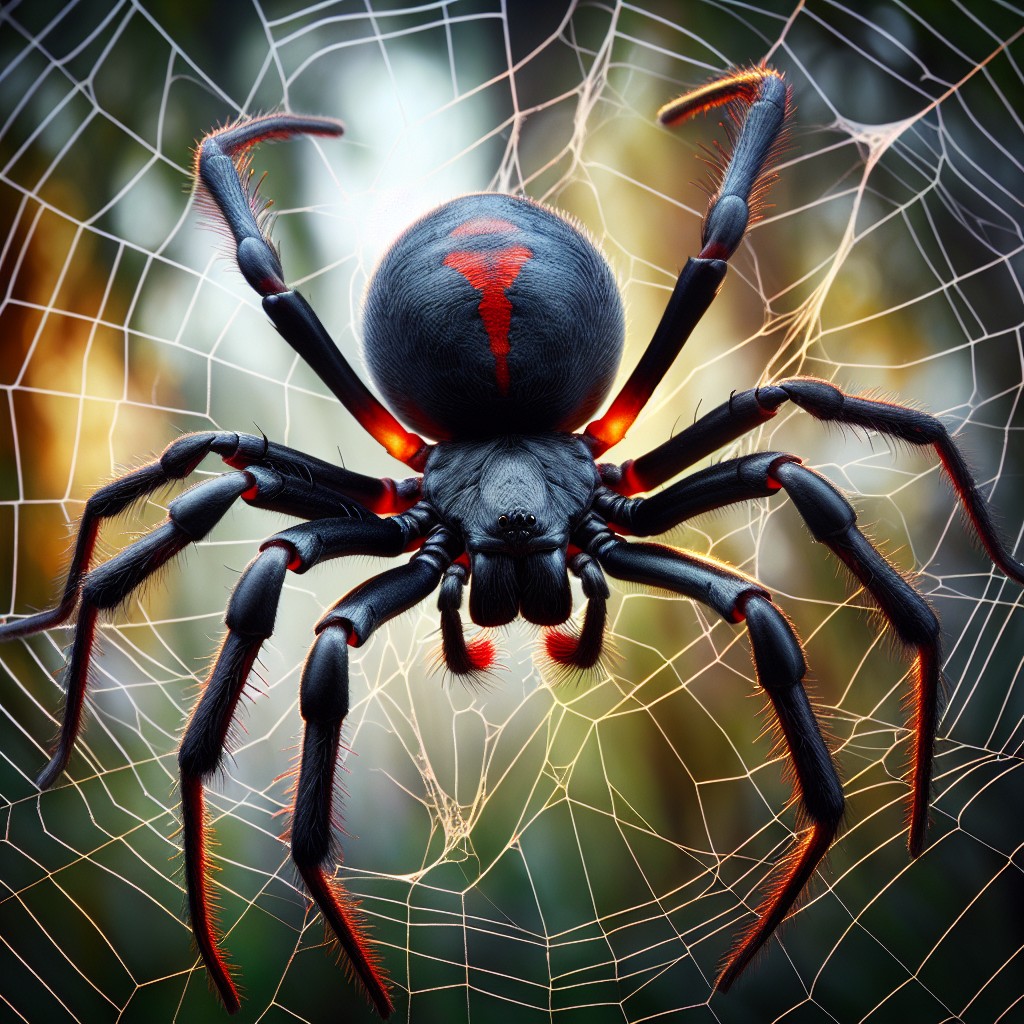The Six-eyed Sand Spider, also known as Sicarius hahni, is a fascinating and enigmatic species of spider that is found in the deserts of southern Africa. This spider is known for its unique appearance and venomous bite, making it a subject of interest for scientists and arachnologists. Understanding the Six-eyed Sand Spider is important not only for studying its biology and behavior, but also for dispelling myths and misconceptions surrounding this intriguing creature.
Key Takeaways
- The Six-eyed Sand Spider is a venomous spider found in deserts of southern Africa.
- It has unique physical characteristics such as six eyes and a flattened body.
- The spider is found in sandy habitats and has a limited distribution range.
- The venom of the Six-eyed Sand Spider is potent and can cause severe symptoms in humans.
- Despite popular myths, the spider is not as lethal as commonly believed and plays an important role in the ecosystem.
Physical Characteristics of the Six-eyed Sand Spider
The Six-eyed Sand Spider is a medium-sized spider, with females reaching a body length of about 1.5 centimeters and males being slightly smaller. One of its most distinctive features is its six eyes, arranged in three pairs on the front of its head. This is unusual among spiders, as most species have eight eyes. The spider’s body is flattened and oval-shaped, with a sandy brown color that helps it blend in with its desert environment.
In terms of physical appearance, the Six-eyed Sand Spider can be compared to other spider species such as the Brown Recluse Spider (Loxosceles reclusa) and the Black Widow Spider (Latrodectus mactans). While all three spiders have a similar body shape and coloration, the Six-eyed Sand Spider can be distinguished by its six eyes and lack of any distinctive markings on its abdomen.
Habitat and Distribution of the Six-eyed Sand Spider
The Six-eyed Sand Spider is primarily found in the deserts of southern Africa, including countries such as Namibia, South Africa, and Botswana. It prefers arid environments with loose sand or soil, where it can burrow and hide during the day. This spider is well adapted to desert life, with specialized hairs on its legs that help it move across loose sand without sinking.
The habitat of the Six-eyed Sand Spider is characterized by extreme temperatures and limited resources. These spiders have evolved to survive in these harsh conditions, using their burrows as a refuge from the heat and hunting at night when temperatures are cooler. They are also able to go for long periods without food or water, making them well-suited to desert life.
The Venom of the Six-eyed Sand Spider
| Property | Value |
|---|---|
| Scientific name | Hexophthalma hahni |
| Location | Africa, Middle East, and Asia |
| Size | Up to 2 inches (5 cm) |
| Color | Yellowish-brown with six eyes |
| Venom toxicity | Highly venomous, can cause severe pain, swelling, and necrosis |
| Antivenom availability | Antivenom is available but may not be widely accessible in all regions |
The venom of the Six-eyed Sand Spider is a subject of great interest and concern. Like many spiders, it uses venom to immobilize and kill its prey. The venom of the Six-eyed Sand Spider contains a potent cocktail of toxins that can cause tissue damage and necrosis in its victims. However, it is important to note that this spider is not aggressive towards humans and will only bite if it feels threatened or cornered.
In terms of its effects on humans, the bite of the Six-eyed Sand Spider can be painful and may cause local swelling and redness. In some cases, the venom can lead to more severe symptoms such as blistering, ulceration, and tissue necrosis. However, it is worth noting that bites from this spider are relatively rare and most cases can be treated effectively with medical intervention.
Myths and Misconceptions Surrounding the Six-eyed Sand Spider
The Six-eyed Sand Spider has gained a reputation as a highly venomous and deadly creature, leading to many myths and misconceptions about its behavior and danger to humans. One common misconception is that the spider actively seeks out human prey and will attack without provocation. In reality, the Six-eyed Sand Spider is a shy and reclusive creature that prefers to avoid confrontation.
Another myth surrounding this spider is that its venom is extremely lethal and can cause death within hours. While it is true that the venom of the Six-eyed Sand Spider is potent, there have been no confirmed deaths attributed to its bite. Most bites result in localized symptoms that can be effectively treated with medical intervention.
The Truth About the Lethality of the Six-eyed Sand Spider
When it comes to the potential danger of the Six-eyed Sand Spider to humans, it is important to put things into perspective. While its venom is certainly potent and can cause significant harm, the spider is not considered to be a major threat to human health. In fact, there are many other spiders that pose a greater risk, such as the Brazilian Wandering Spider (Phoneutria spp.) and the Sydney Funnel-web Spider (Atrax robustus).
It is worth noting that the Six-eyed Sand Spider is not an aggressive species and will only bite if it feels threatened or cornered. Most bites occur when humans accidentally come into contact with the spider, such as when putting on clothing or shoes that the spider has hidden in. By taking simple precautions, such as shaking out clothing and shoes before wearing them, the risk of being bitten by this spider can be greatly reduced.
The Role of the Six-eyed Sand Spider in the Ecosystem
Despite its fearsome reputation, the Six-eyed Sand Spider plays an important role in its ecosystem. As a predator, it helps to control populations of insects and other arthropods in its desert habitat. By feeding on these smaller creatures, the spider helps to maintain a balance in the ecosystem and prevent outbreaks of pests.
In terms of prey, the Six-eyed Sand Spider primarily feeds on other arthropods such as beetles, ants, and termites. It uses its stealth and camouflage to ambush its prey, often lying in wait at the entrance of its burrow before striking with lightning speed. This hunting strategy allows the spider to conserve energy and minimize its exposure to potential predators.
Interesting Behaviors of the Six-eyed Sand Spider
The Six-eyed Sand Spider exhibits several interesting behaviors that contribute to its survival in the desert environment. One unique behavior is its ability to bury itself in the sand, using its specialized hairs to anchor itself and prevent sinking. This allows the spider to remain hidden during the day and avoid detection by predators.
Another interesting behavior of the Six-eyed Sand Spider is its mating ritual. Male spiders will often approach a female’s burrow and tap on the entrance to signal their presence. If the female is receptive, she will emerge from her burrow and engage in a courtship dance with the male. Once mating is complete, the female will lay her eggs in a silk sac and guard them until they hatch.
Conservation Efforts for the Six-eyed Sand Spider
The Six-eyed Sand Spider faces several threats to its survival, primarily due to habitat loss and degradation. As desert environments are increasingly impacted by human activities such as mining and agriculture, the spider’s habitat is being destroyed or fragmented. This puts pressure on the spider’s population and makes it more vulnerable to extinction.
Efforts are underway to protect the Six-eyed Sand Spider and its habitat. Conservation organizations are working to raise awareness about the importance of desert ecosystems and the need to preserve them. They are also advocating for the establishment of protected areas where the spider can thrive without disturbance.
Understanding the Six-eyed Sand Spider
In conclusion, the Six-eyed Sand Spider is a fascinating and misunderstood creature that plays an important role in its desert ecosystem. By understanding its biology, behavior, and venom, we can dispel myths and misconceptions surrounding this spider and appreciate its unique adaptations for survival in harsh desert environments. Protecting the Six-eyed Sand Spider and its habitat is not only important for preserving biodiversity, but also for maintaining the delicate balance of ecosystems that we all depend on.
FAQs
What is a Six-eyed Sand Spider?
A Six-eyed Sand Spider is a venomous spider species belonging to the genus Sicarius. They are found in deserts and arid regions of southern Africa and South America.
What does a Six-eyed Sand Spider look like?
A Six-eyed Sand Spider has a flattened body and is covered in fine hairs. They have six small eyes arranged in three pairs and are usually light brown or yellowish in color.
How venomous is a Six-eyed Sand Spider?
A Six-eyed Sand Spider is considered to be one of the most venomous spiders in the world. Their venom contains a potent cytotoxin that destroys cells and tissues, leading to necrosis and potentially fatal systemic effects.
What is the habitat of a Six-eyed Sand Spider?
A Six-eyed Sand Spider is found in deserts and arid regions of southern Africa and South America. They are often found in sandy areas, under rocks, and in crevices.
What is the behavior of a Six-eyed Sand Spider?
A Six-eyed Sand Spider is a nocturnal hunter that buries itself in the sand during the day. They are ambush predators that wait for their prey to come close before striking with their venomous bite.
What is the diet of a Six-eyed Sand Spider?
A Six-eyed Sand Spider feeds on a variety of insects and other arthropods, including ants, termites, and beetles.
What is the lifespan of a Six-eyed Sand Spider?
The lifespan of a Six-eyed Sand Spider is not well known, but it is believed to be around 2-3 years.



